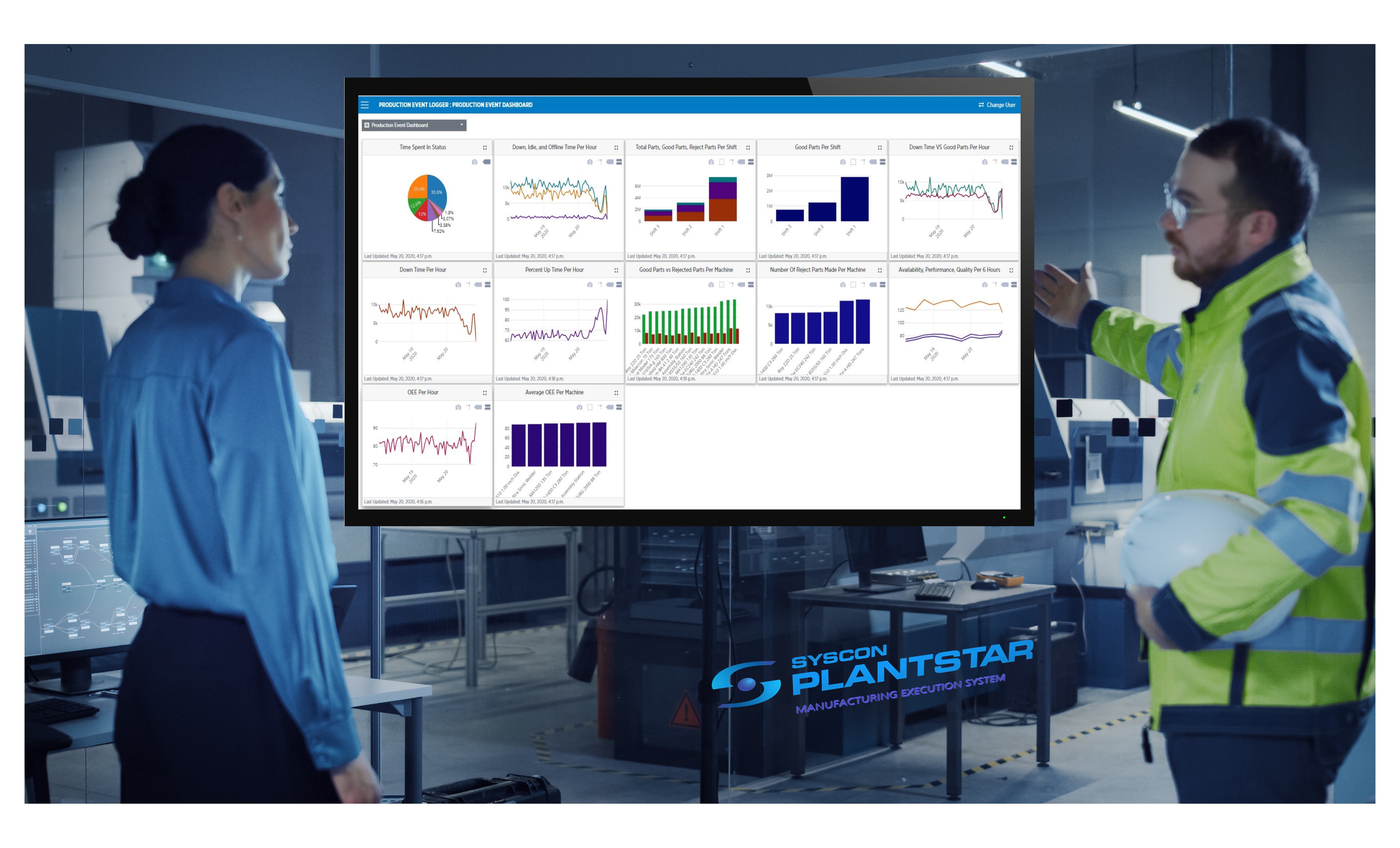PlantStar BLOG
Real-Time Production Monitoring Software Streamlines Manufacturing Operations
Mar 8, 2024 4:06:00 PM / by PlantStar Team
-3.png?width=960&height=540&name=Untitled%20design%20(6)-3.png)
Traditionally, manufacturing personnel operated reactively. They examined reports that outlined how a production run fared, correlated information, and then tried to make changes to enhance their operations after the work was done. The emergence of new technology solutions, like the Internet of Things, data analytics, and artificial intelligence, enable them to perform real-time production monitoring, which empowers suppliers to maximize manufacturing efficiency, enact productivity enhancements, and increase profitability.
Real-time production monitoring refers to the continuous and instantaneous observation, measurement, and analysis of manufacturing and supply chain production processes. Delivering current information enables managers to make real-time decisions: changing staffing if needed; identifying and solving bottlenecks; and communicating current product status to customers.
For production monitoring software to work, a number of building blocks had to be put into place
- IoT integration in manufacturing operations adds intelligence to traditionally dumb devices, like plant equipment
- Artificial intelligence enables suppliers to work with large volumes of information and increasingly automates traditional manual interactions
- Data analytics collects and correlates information from sensors, so plant performance and trends become clear
The real work benefits that production monitoring software offers are many.
Leverage Real-Time Actionable Data to Improve Operations
Because manufacturing is a well established industry, many plants have been running for decades, and their processes were built on the technology that was available at the time. As a result, many suppliers still work with cumbersome static spreadsheets. Manual data input, however, is prone to human error. Also, since manually created spreadsheets do not update automatically, they are almost instantly out of date. Such problems have compounded as the volume of items tracked has grown and processes such as material tracking, job scheduling, downtime tracking, job shift summarizing, and scrap reporting have become more complex.
Real-time production monitoring replaces these outdated tools with modern digital exchanges. Data is typically displayed in customized dashboards and reports, providing enhanced plant visibility and operational transparency. As a result, managers and employees are better empowered to
- Detect and prevent errors
- Understand production flow and material usage
- Make accurate forecasts
- Make immediate changes to improve performance
- Prevent downtime through smart scheduling and predictive maintenance
Automate Manual Processes
Manufacturing processes often rely on manual data tracking, but technology has evolved to accommodate a growing number of digital exchanges. A manufacturing execution system (MES) can consolidate and analyze performance information. If any deviation occurs in the supply chain or on the production line, the system can immediately send out email, text, or voice alerts and notifications to key personnel. As a result, issues are identified and mitigated faster and more efficiently.
Align Labor with Production Needs
Maintaining the right number of people on the shop floor can be a challenging juggling act. Too few employees cause bottlenecks because products do not move as quickly as planned and can result in missed production deadlines, and too many workers result in unnecessarily high labor costs. Striking the right balance requires access to accurate, real time data. With it, managers can understand their labor needs: not only how many staff are required on production lines but also what skill sets they must have and how long it will take to complete the job.
Real-time production monitoring software provides a clear picture of where items stand in the product line, simplifying forecasting and scheduling. Labor optimization tools help manufacturers streamline scheduling and more efficiently deploy workers. The result is optimized workforce performance, productivity, and on-time completion rates.
Enhance Customer Satisfaction
Customer demands have been on the rise. Organizations expect their suppliers to keep them abreast of product creation from start to finish. Real-time production monitoring software enables companies to provide more visibility into the status of outstanding orders. Increasingly, customers are able to see exactly where their order is in the supply chain, production floor, and distribution system. So, when items arrive early or late, they are better able to adjust. Additionally, these systems enhance product quality because defects are less likely to slip through undetected.
Real-time production monitoring benefits customer relations multiple ways:
- Increased on-time delivery
- Higher product quality
- Increased repeat and referral businesses
As customer loyalty rises, and sales are likely to follow.
Implementing real-time production monitoring can deliver several benefits, including increased productivity, improved quality control, reduced downtime, better resource utilization, and enhanced overall manufacturing efficiency. To learn more about how your operation can take advantage of these technological advances, subscribe to the PlantStar blog.
Topics: production monitoring
Subscribe to Email Updates
Posts by Topic
- Manufacturing Execution Systems (38)
- manufacturing solutions (16)
- MES 101 (13)
- Industry 4.0 (11)
- improve efficiency (10)
- Plastic Molding (9)
- Plastics Technology (9)
- mes software (9)
- mes solutions (9)
- MES hardware (8)
- Shop Floor Production (8)
- digital transformation (7)
- Reduce scrap (6)
- data-driven-decisions (6)
- Medical molding (5)
- lean manufacturing (5)
- process monitoring (5)
- product quality (5)
- lights-out manufacturing (4)
- manufacturing dashboard (4)
- production monitoring (4)
- ERP integration (3)
- Shop Floor Safety (3)
- supply chain management (3)
- Injection Molding Technology (2)
- defect collection (2)
- machine mes (2)
- process variables (2)
- digital strategy (1)
- labor gap (1)
- throughput (1)
Related Articles

.jpg)
